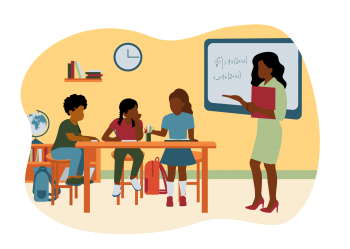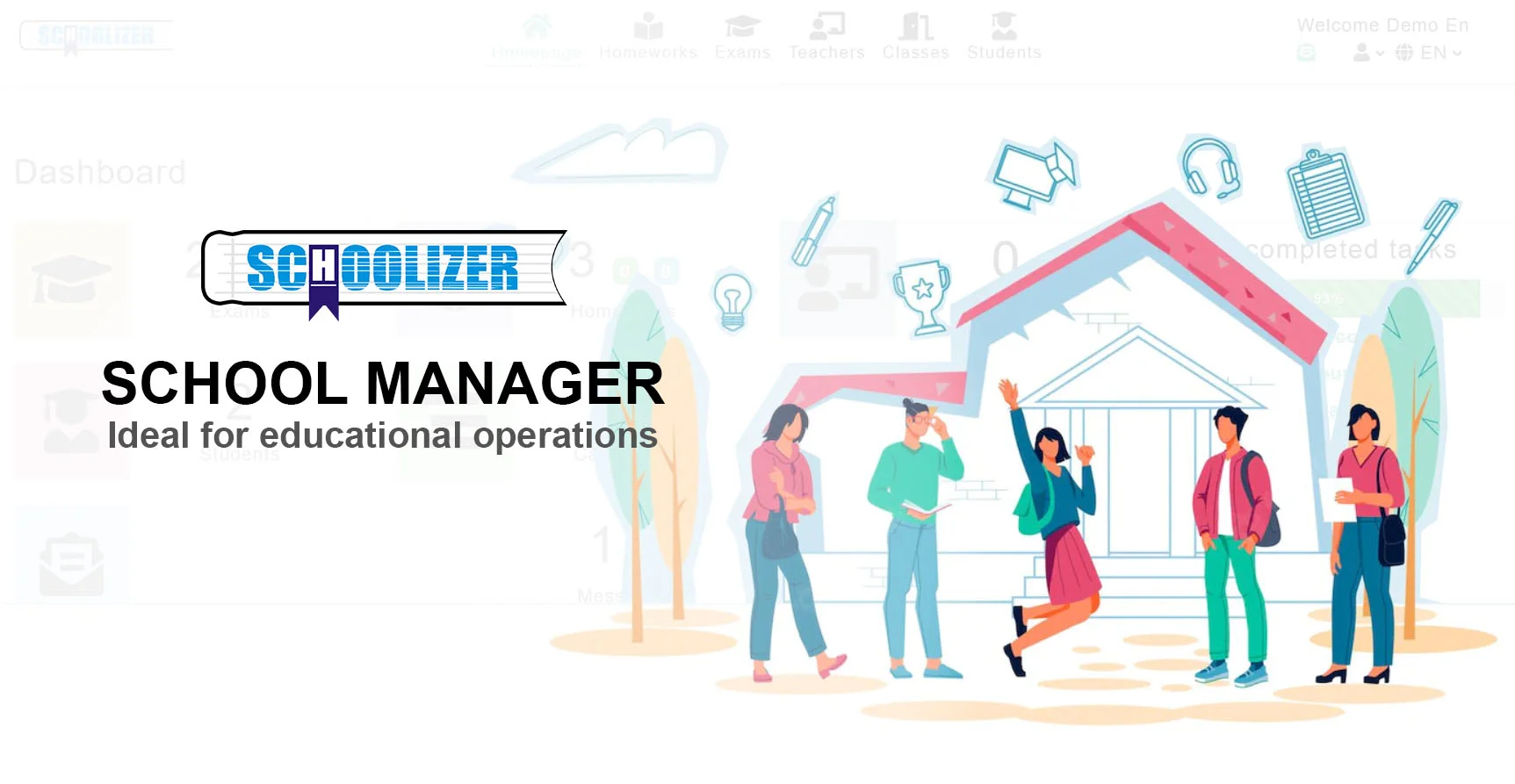The Importance of Innovative Learning in Education

In today's rapidly changing world, the traditional methods of education are no longer enough to prepare students for success. With advancements in technology, shifts in the job market, and evolving societal needs, there's a growing demand for innovative approaches to learning.
That's where innovative learning comes in. In this blog post, we'll explore the importance of innovative learning in education and how it's reshaping the way we teach and learn.
What is Innovative Learning?
Innovative learning, also known as innovative education or innovative pedagogy, refers to a modern approach to education that emphasizes creativity, critical thinking, and adaptability.
Innovative learning is basically a fancy way of saying "thinking outside the box" when it comes to education. It's all about shaking things up in the classroom, using cool new teaching methods, and getting students more involved in their own learning.
Instead of just memorizing facts, students get to explore, work together on projects, and solve real-world problems. The idea is to prepare students for the real world by teaching them how to think creatively, adapt, and keep learning even after they leave school. It's like giving them the tools they need to be successful in whatever they choose to do in life.

Read more: The 10 Best Ways to Increase Student Engagement in the Classroom
What are the Strategies of Innovative Learning?
Strategies of innovative learning encompass a variety of approaches and techniques aimed at fostering creativity, critical thinking, and engagement in the learning process. Some of these strategies include:
- Project-based learning: Students work on projects that require them to apply knowledge and skills to real-world problems, promoting deeper understanding and skill development.
- Inquiry-based learning: Students explore topics of interest through questioning, investigation, and problem-solving, fostering curiosity and self-directed learning.
- Flipped classroom: Traditional lecture and homework elements are reversed, with students learning content at home through videos or readings and engaging in activities, discussions, and application of concepts during class time.
- Collaborative learning: Students work together in groups to solve problems, share ideas, and construct knowledge, promoting teamwork and communication skills.
- Personalized learning: Instruction is tailored to meet the individual needs, interests, and learning styles of each student, allowing for differentiated instruction and personalized pathways to mastery.
- Use of technology: Integrating technology tools such as educational apps, interactive simulations, and online resources to enhance learning experiences and provide opportunities for exploration and creativity.
- Experiential learning: Learning occurs through hands-on experiences, real-world simulations, and immersive activities that allow students to directly engage with concepts and apply their learning in authentic contexts.
- Gamification: Incorporating elements of game design, such as challenges, rewards, and competition, into the learning process to increase motivation, engagement, and retention of content.
Read more: How to Become the Best English Teacher? 5 New Educational Methods for English Teachers
The Benefits of Innovative Learning
The benefits of innovative learning are numerous and impactful, shaping the educational experience for both students and educators alike. Here are some key advantages:
- Enhanced Engagement: Innovative learning methods, such as hands-on activities, project-based learning, and interactive technologies, increase student engagement by making learning more dynamic, relevant, and enjoyable.
- Improved Critical Thinking: Innovative learning encourages students to think critically, analyze information, and solve complex problems, equipping them with essential skills for success in academics and beyond.
- Personalized Learning: By catering to individual learning styles, interests, and abilities, innovative learning promotes personalized learning experiences that empower students to take ownership of their education and progress at their own pace.
- Fostering Creativity: Innovative learning environments nurture creativity by providing opportunities for exploration, experimentation, and innovation, allowing students to express themselves, think outside the box, and generate original ideas.
- Collaboration and Communication: Through collaborative projects, group discussions, and interactive learning activities, innovative learning fosters collaboration and communication skills, preparing students for success in team-based environments and social interactions.
- Real-World Relevance: Innovative learning methods often integrate real-world applications, allowing students to see the practical relevance of their learning and develop skills that are directly applicable to their future careers and life experiences.
- Lifelong Learning Skills: By promoting curiosity, adaptability, and a growth mindset, innovative learning instills a love for learning and equips students with the skills and attitudes needed for lifelong learning and continuous personal and professional growth.
- Teacher Professional Development: Innovative learning encourages educators to adopt new teaching strategies, explore emerging technologies, and engage in ongoing professional development, enhancing their effectiveness as teachers and facilitators of learning.

Learn more: How to Make Lesson Plans? The Best Way to Plan Lessons in 2024
How to Apply Innovative Learning in my Classroom?
Applying innovative learning in your classroom requires a thoughtful approach that integrates new teaching methods, technologies, and learning experiences. Here are some steps you can take to implement innovative learning:
- Set Clear Learning Objectives: Begin by identifying the learning goals and objectives for your students. Determine what knowledge, skills, and competencies you want them to acquire through innovative learning experiences.
- Explore Innovative Teaching Methods: Familiarize yourself with innovative teaching methods such as project-based learning, inquiry-based learning, flipped classroom, and experiential learning. Choose methods that align with your learning objectives and the needs of your students.
- Integrate Technology: Incorporate technology tools and resources into your lessons to enhance engagement and facilitate learning. Use educational apps, interactive simulations, multimedia presentations, and online resources to create interactive and dynamic learning experiences.
- Foster Collaboration: Create opportunities for collaboration and teamwork among your students. Encourage group projects, discussions, and peer-to-peer learning activities that promote collaboration, communication, and problem-solving skills.
- Promote Inquiry and Exploration: Encourage curiosity and exploration by posing open-ended questions, encouraging experimentation, and allowing students to pursue their interests through independent inquiry projects.
- Provide Authentic Learning Experiences: Design learning activities that have real-world relevance and application. Connect classroom learning to real-life situations, problems, and challenges to make learning more meaningful and engaging for students.
- Differentiate Instruction: Recognize and accommodate the diverse learning needs, interests, and abilities of your students. Differentiate instruction by providing multiple pathways to learning, offering choice and autonomy, and scaffolding support as needed.
- Assess Learning Authentically: Use authentic assessment methods such as project portfolios, presentations, performances, and real-world tasks to assess student learning. Focus on assessing students' understanding, skills, and abilities rather than just their ability to recall information.
- Reflect and Iterate: Continuously reflect on your teaching practices and student outcomes. Seek feedback from students and colleagues, and be open to making adjustments and refinements to your approach based on what works best for your students.
Read more: The Full Guide to Assessment in the Teaching and Learning Process
To Conclude
Innovative learning isn't just a trend; it's a necessity in our increasingly complex and dynamic world. By embracing innovative approaches to education, we can empower students to become lifelong learners, critical thinkers, and problem solvers.
Let's continue to champion innovative learning initiatives with Schoolizer and create learning environments that inspire creativity, foster collaboration, and prepare students for the challenges and opportunities of the future.






